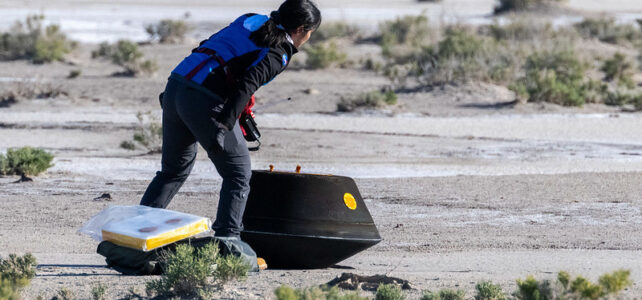Wonder has been hard to come by lately. For me anyway. Sometimes I’m more tuned in, open and attentive. But with national and global news, I’ve been overwhelmed, and dullness settled in. On a morning walk I did see a hairy-capped acorn that drew me to stop and look closely. I stuck it in my pocket to send to a great-nephew with whom I share such things.
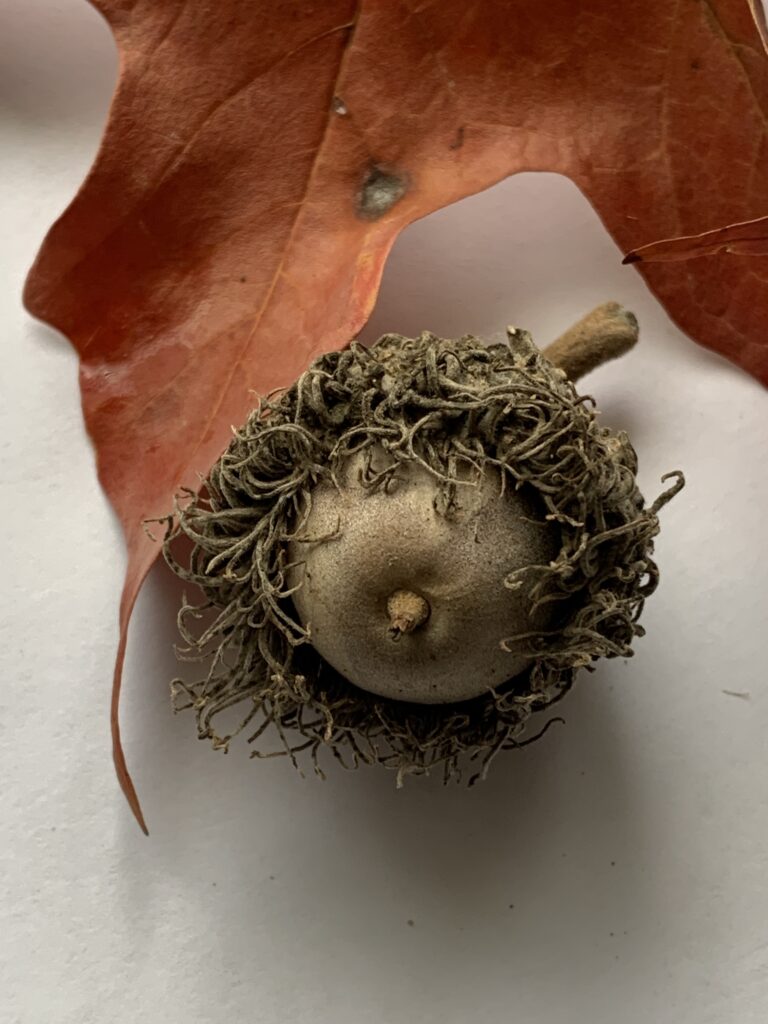
Still, all in all, I’ve been moving through days focused on a writing project, completing a couple leg exercise sets daily, and walking enough laps around the neighborhood to meet my step goal.
Last Sunday started out much the same when a cell phone “ding” alerted me to a short text on the family thread: “Happy OSIRIS-REx Return Day!!!!,” followed by a NASA link.
What was “OSIRIS-REx” and where was it returning from? I followed the link and forgave myself for not recognizing the mission: It began in 2016! A lot has happened on earth in the past seven years. After a quick read through the article, I clicked on NASA TV and virtually joined my family in watching the drama unfold.
Once again, NASA and the teams that work with them streamed a sense of wonder, joy, and hope into my living room.
Wonder
Wonder at how their engineers design such a craft
It traveled for a year to orbit the sun, then returned close to Earth, using its gravity to bend its trajectory, lining up with the asteroid Bennu’s orbit and continuing the journey. In 2018 it began mapping the surface of Bennu looking for a good place to collect samples. When it did in late in October 2020, the collection was what what a NASA commentator called a “pogo stick” operation – A quick contact of the robotic arm with the soft, rocky surface to collect bits of the asteroid’s pebbles and dust, then a pull back.
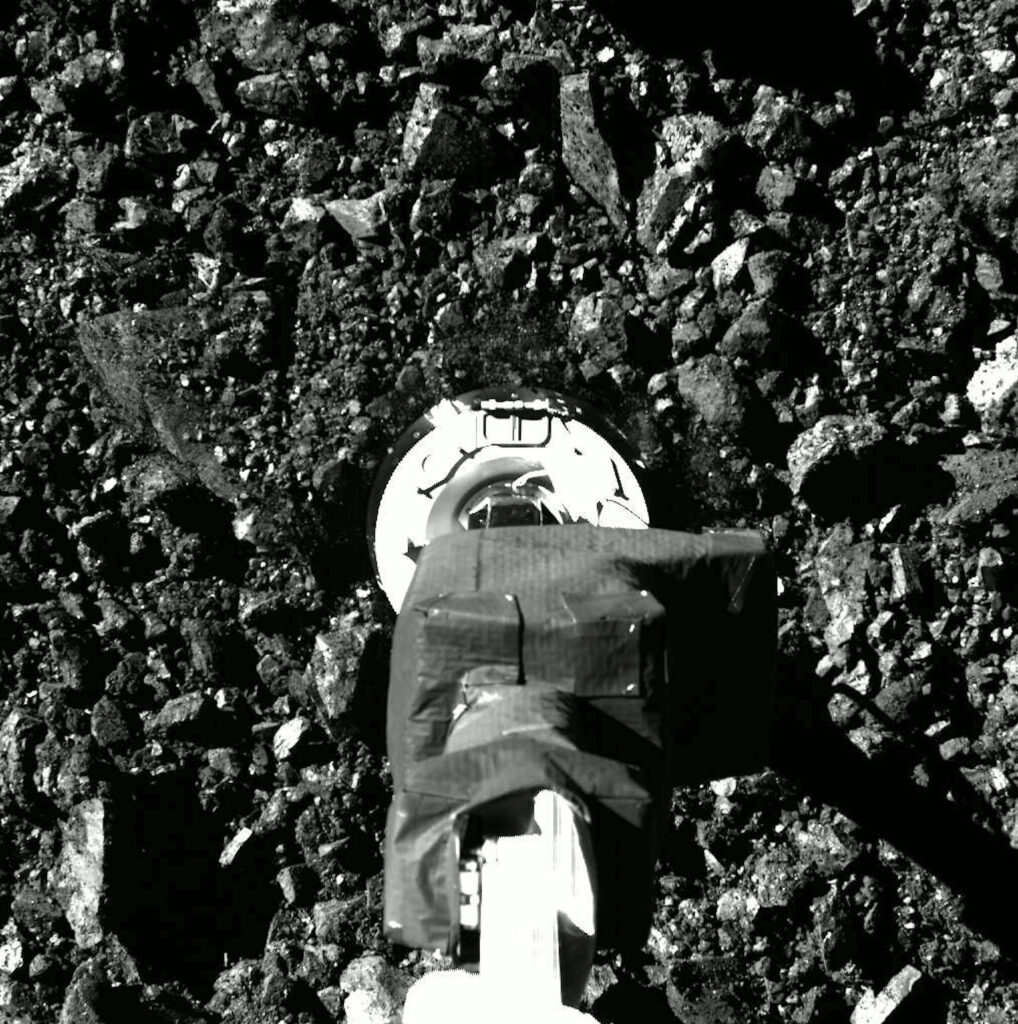
Robotic arm briefly touched asteroid
In 2021 OSIRIS-REx (sometimes referred to by NASA experts as “O-REx.” You’ve gotta love their way with endearing nicknames) started home.
Then, September 24, 2023 the craft flew close enough to earth to release the sample-bearing capsule that streaked toward Earth at 27,000 mph, eventually slowed to 11 mph by the bright parachute that deployed without a hitch, and then landed where expected! Remarkable.
Wonder at how scientists will tease information about the origin of our planet from those bits of asteroid
They are hopeful that O-REx’s cache will provide new insights into the vast cosmos and it’s beginning. Whatever we learn, it will expand our knowledge and experience of the universe. The James Webb Space Telescope continues to give us stunning glimpses of deep space. Even the “closeup” bits we can see with our own eyes, like a Super Moon shining through a break in clouds, make my heart beat faster.
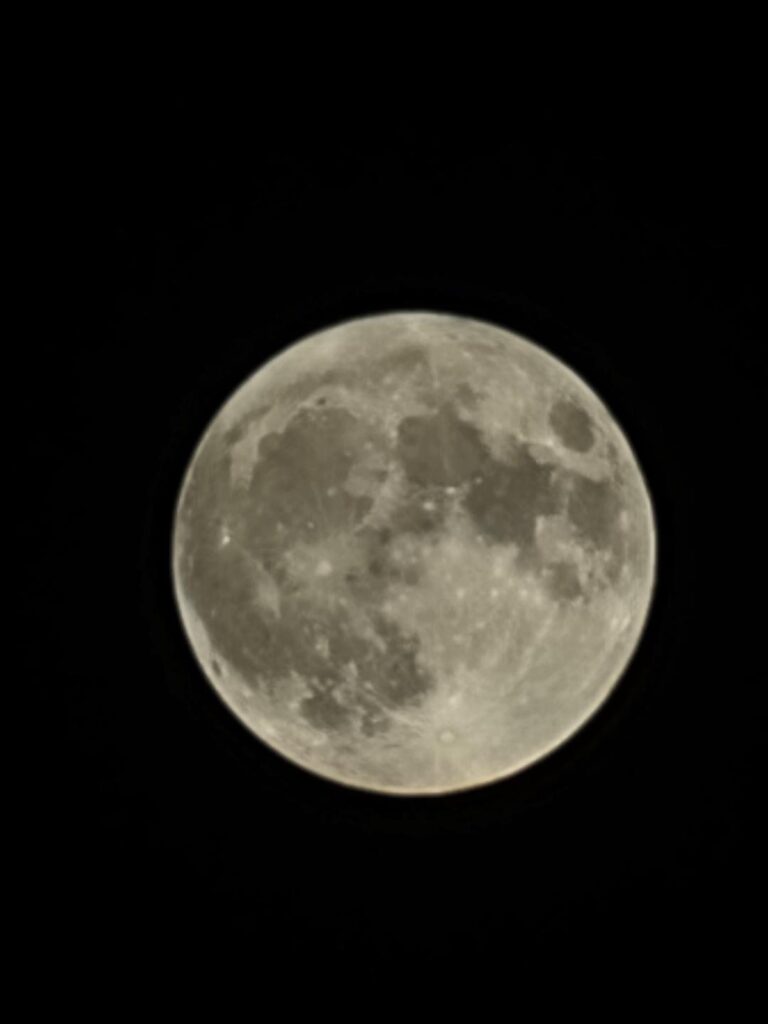
Pierre Teilhard de Chardin said that we meet God in matter. That has been my spiritual experience since childhood and seemed evident despite dualist teachings to the contrary.
Ilia Delio writes that for Teilhard, “matter is the incarnating presence of divinity; God is present in matter and not merely to matter.”
Teilhard also wrote that nothing is profane if one had eyes to see. How significantly the current space exploration and scientific advances have expanded what we can “see.”
Scientist and theologian Judy Cannato wrote of the challenge this presents: “The new cosmology can upset our old truths as it challenges us to adopt a novel vision of life. Taking a look at a new paradigm will always expose our illusions and bring about a confrontation with our fears … like Einstein, we can choose to fudge our own equations, living in one world while praying in another. Or we can endeavor to reconcile science and faith within ourselves allowing them not only a peaceful coexistence but a mutual resonance that permits us to live a life filled with radical amazement.”
It’s a call to wonder!
Joy
Joy in effort, beauty, and being
Joy and enthusiasm emanated from Jim Garvins, NASA Goddard Space Flight Center’s chief scientist, who was in Utah for the capsule’s landing. Throughout the broadcast his smile and enthusiasm were contagious. Smiles covered the faces of those in Mission Control as they watched the successful conclusion to OSIRIS-REx’s journey. The face of the correspondent beamed as she covered the return from just a few miles away. Everyone involved was jubilant. Local elementary and high school students were thrilled to have something so momentous happening in their backyard.
In his book, Awe, Dacher Keltner writes of things that move us to tears including beauty of all types and “awareness of vast things that unite us with others.” Those familiar with this column may remember columns about other NASA missions that moved me to tears: Cassini’s final descent into Saturn’s atmosphere, sending images until its final moment. Perseverance’s landing on Mars. The successful launch and final unfolding of the James Webb telescope.
Tears welled in my eyes again as I watched not only the landing of OSIRIS-REx’s capsule, but of the careful transfer to the temporary clean room.
Hope
Hope in the ability of human beings to cooperate and accomplish extraordinary things together
NASA and worldwide space agencies are good at this. The James Webb is one example. So is O-REx. The mission brought together numerous organizations including the University of Arizona, NASA’s Goddard Space Flight Center, Lockheed Martin Space Systems, and the Utah Test and Training Range.
Hope for a future of respect for all people
The highly visible role women played in the recovery of the capsule recalled NASA’s ongoing commitment to creating an inclusive culture in the organization. It strives to celebrate and support diversity, recognizing that every person brings gifts to be shared. In these days, when fear-mongering and the violence it engenders is on the rise, NASA’s efforts to expose the lies of racism, sexism, homophobia, transphobia, and other “isms” and “phobias” that plague the world are welcome. They provide an example of how humankind can move forward together.
Hope for commitment to the common good
NASA will not horde the precious asteroid samples for its scientists but will distribute up to 30% to scientists around the globe. The remainder will be kept at NASA’s Johnson Space Center (and White Sands) for other scientists and for future generations of scientists who will have different questions and more advanced technologies to help answer them. (I think this cooperative spirit and the consideration of future needs is common among scientists. It’s why archaeologists, with their long view, excavate only a section of a site.)
Gratitude
Just as the hairy bur oak acorn broke into my imagination during an otherwise “inattentive” walk, the return of OSIRIS-REx’s capsule full of asteroid bits pushed aside dullness and filled my heart with joy, wonder, and hope. Then, without another word, OSIRIS-REx changed course and headed off on a journey deep into space. (It is now called OSIRIS-APEX or Osiris-Apophis Explorer, after the asteroid it will encounter next: Apophis) We will hear back from it in 2029.
Meanwhile, for expanding my horizons. For reminding me of creation’s wonders near at hand and far away. For uncovering the connectedness of everything. For these gifts, I again say “Thank you” to NASA and all its partners.
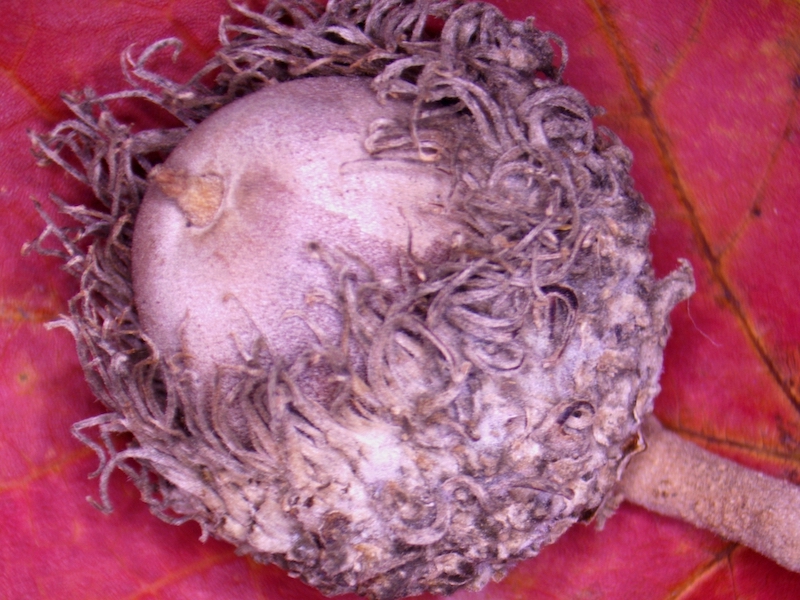
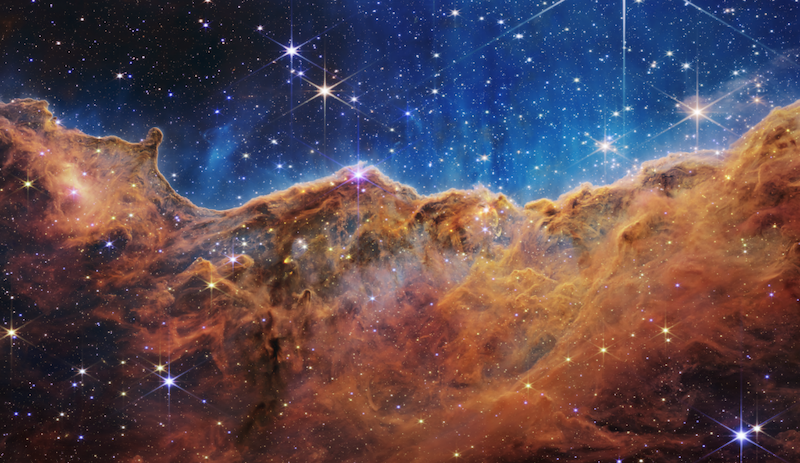
Feature photo provided by NASA Goddard Space Flight Center. Photos by Mary van Balen unless otherwise credited
Resources
To Bennu and Back: Journey’s End Short video NASA Goddard
OSIRIS-REx Asteroid Sample Return (Official 4K NASA Broadcast)
The Hours of the Universe: Reflections on God, Science, and the Human Journey by Ilia Delio pp 54-55
Radical Amazement: Contemplative Lessons from Back Holes, Supernovas, and other Wonders of the Universe by Judy Cannato p 36
Awe: The New Science of Everyday Wonder and How It Can Transform Your Life by Dacher Keltner pp 44-48
